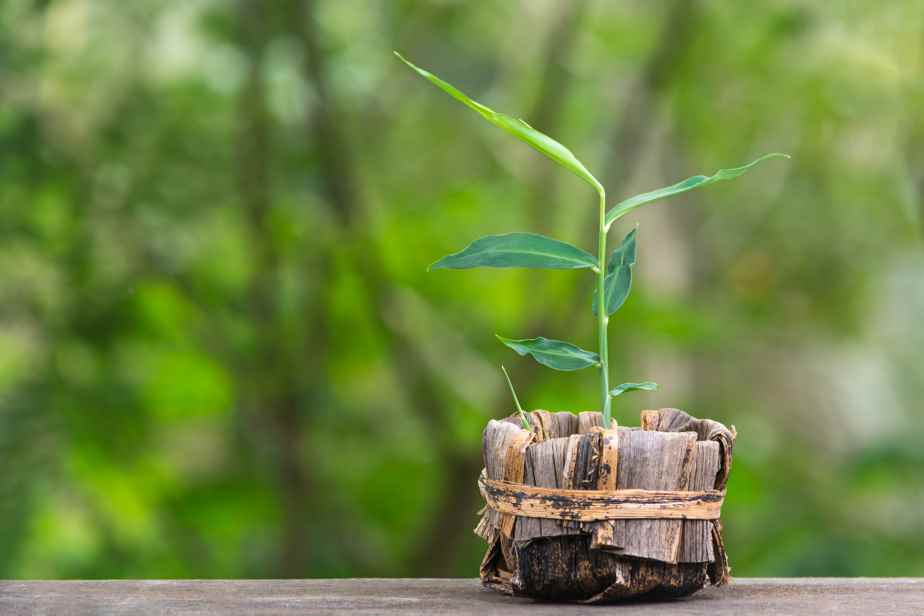In a tropical climate, ginger produces pretty mauve flowers between its lanceolate leaves. In our short gardening season, we will have to mourn the floral bouquet, but we will have the essentials of ginger: a bouquet of aromas from its rhizomes and a touch of exoticism in the garden.
Posted at 7:15 p.m.
Ginger is at home in the humidity and heat of the jungle. One might think it capricious in our arid zones, but its cultivation is, on the contrary, rather easy. Nutritionist Bernard Lavallée, a lover of this condiment in the kitchen, became interested in it three years ago. He grows it every summer since, in the projections of the sidewalk or in pots on his balcony. “Few plants allow us to be self-sufficient. But with my small production of ginger, I manage to obtain a sufficient quantity for the year. »

PHOTO FROM THE URBAN NUTRITIONIST WEBSITE
In Quebec, no flowers will emerge from ginger plants, but the essentials will be found underground: the rhizomes with their characteristic taste and aroma.
Like the potato, ginger develops its rhizomes from… other rhizomes. No need to browse horticulture sites looking for them: you can find them at the grocery store! They will stem from the small growths, commonly called “eyes”, which dot the bulbs. When choosing your crop specimens, favor candidates that are firm, unwilted, and have multiple eyes. If one of them starts to germinate, it’s a good sign! The rhizome is alive and well. To increase your chances of success, choose organically grown ones, advises horticulturist Larry Hodgson. Those from the grocery store, however, have proven themselves.

PHOTO SLAVA DUBROVIN, GETTY IMAGES
The shoots will sprout directly from the brownish-skinned bulb, of tropical origin, which is typically found in grocery stores.
Start the culture: it’s now!
This is the time to start your ginger indoors before taking it out to the garden in a month, when the mercury and the earth will have warmed up enough. “We recommend not to take out your tomatoes before it is at least 10°C at night. I follow the same rule for my ginger,” says Bernard Lavallée, revealing his technique. When he returns from the grocery store, he soaks the rhizomes for 24 hours in water to stimulate their growth. He then places them in the ground whole. However, the rhizomes can be divided into sections of 2 cm or 3 cm in length to increase the harvest, advises Larry Hodgson. After one season, the bulbs will have at least doubled in size.
In its natural environment, ginger develops rhizomes on the surface of the soil, slightly or partially buried. At home, after soaking, the bulbs can be placed on a layer of about 15 cm of moist soil, with the eyes directed upwards. They are then covered with a light layer of compost before watering them again.

PHOTO FROM THE URBAN NUTRITIONIST WEBSITE
You have to be patient with growing ginger. It can easily take a month before small shoots come out of the ground.
Ginger loves heat and humidity, it was said. “By the time the roots germinate and the stems come out of the ground, I cover the surface of the pot with plastic wrap to keep the humidity there, describes Bernard Lavallée. My gardening philosophy is to use what I have on hand. So I use old plastic bins and an old desk lamp to warm the earth. You have to be patient, he warns. It can easily take a month before small shoots come out of the ground. But the temperature will then be perfect for taking the plants out of the house and transplanting them into a larger pot or placing them in the ground in a well-lit area of the garden, gradually acclimatizing them.
“Really, there’s not much special to do next except water the ginger when its soil is dry and fertilize it like other plants. Personally, I put chicken manure fertilizer once a month, quite simply,” says the nutritionist and gardener.
Harvest time
Ginger stems grow 60 cm to 100 cm during the summer. Eventually, in September or before any risk of frost, the rhizomes will be ready to be harvested. However, you can have fun picking it in the summer by breaking off a piece of root, observes Bernard Lavallée. The harvest will simply be less generous. “But I prefer to wait until the end of the season. I then dig it all up and discover my harvest! »
The new bulbs are a soft yellow with some reddish scales, and not beige like those on the market. They will not have had time to develop their brownish skin as in a warmer climate, but will, on the other hand, have all the taste of ginger and a less prominent fibrous side.

PHOTO FROM THE URBAN NUTRITIONIST WEBSITE
New bulbs are a soft yellow with some reddish scales.
For the next gardening season, you can keep a few potted stems indoors, under a lamp. For their foliage to persist and the rhizomes to grow, the plants require heat and a sufficient amount of sunshine. Without these conditions, the ginger will go dormant only to wake up in the spring when the light is higher. It will nevertheless be possible to draw its rhizomes from the ground to decorate stews and stir-fries.
Once dug up, the rhizomes keep for about a month in the fridge. To make sure you have them on hand all winter long, the easiest way to store them is to freeze them whole or grated in ice cube trays. “It’s not so much to save money that I grow my ginger as for the pleasure,” emphasizes Bernard Lavallée. For me, gardening is really reconnecting with food production and understanding how it grows. And frankly, being able to grow a tropical plant like ginger in Quebec is the most rewarding side. For me, that’s the real benefit! »

